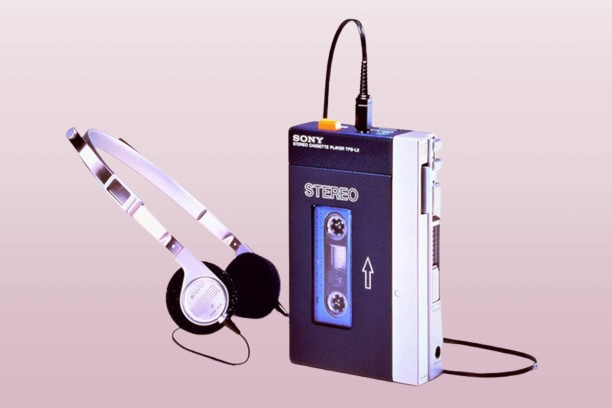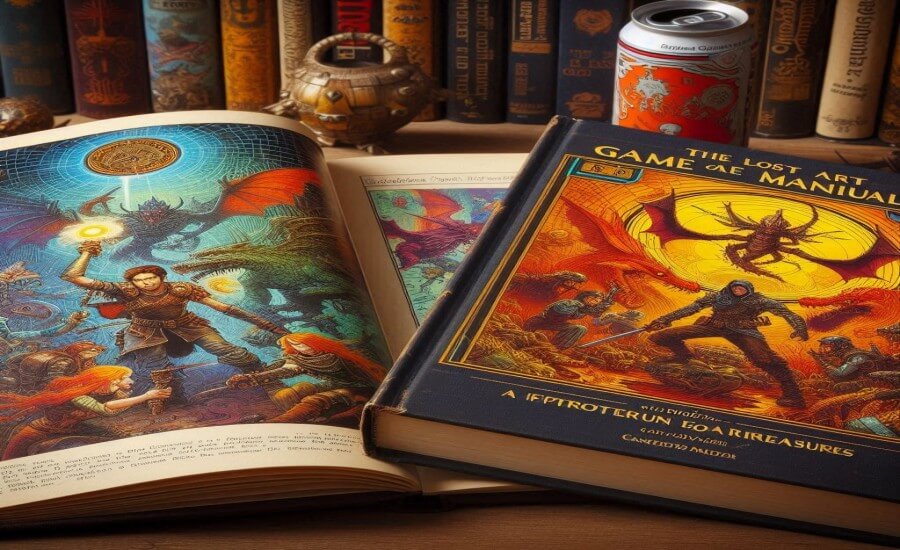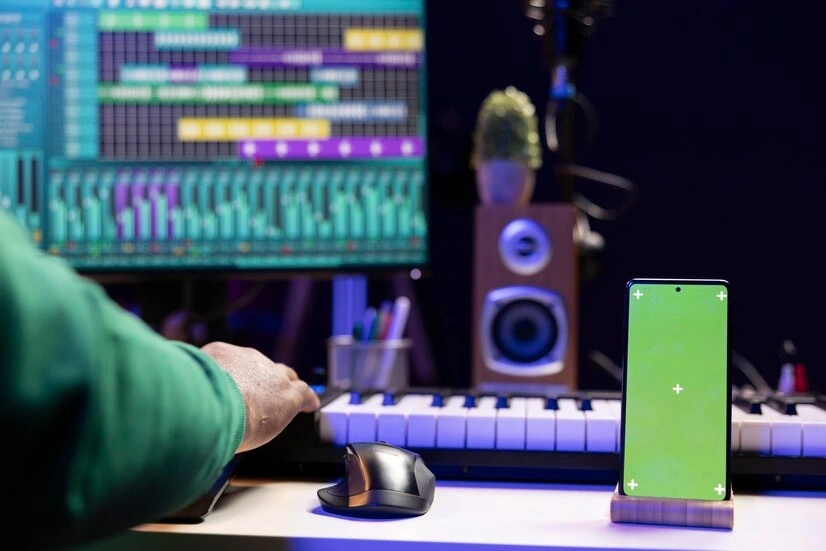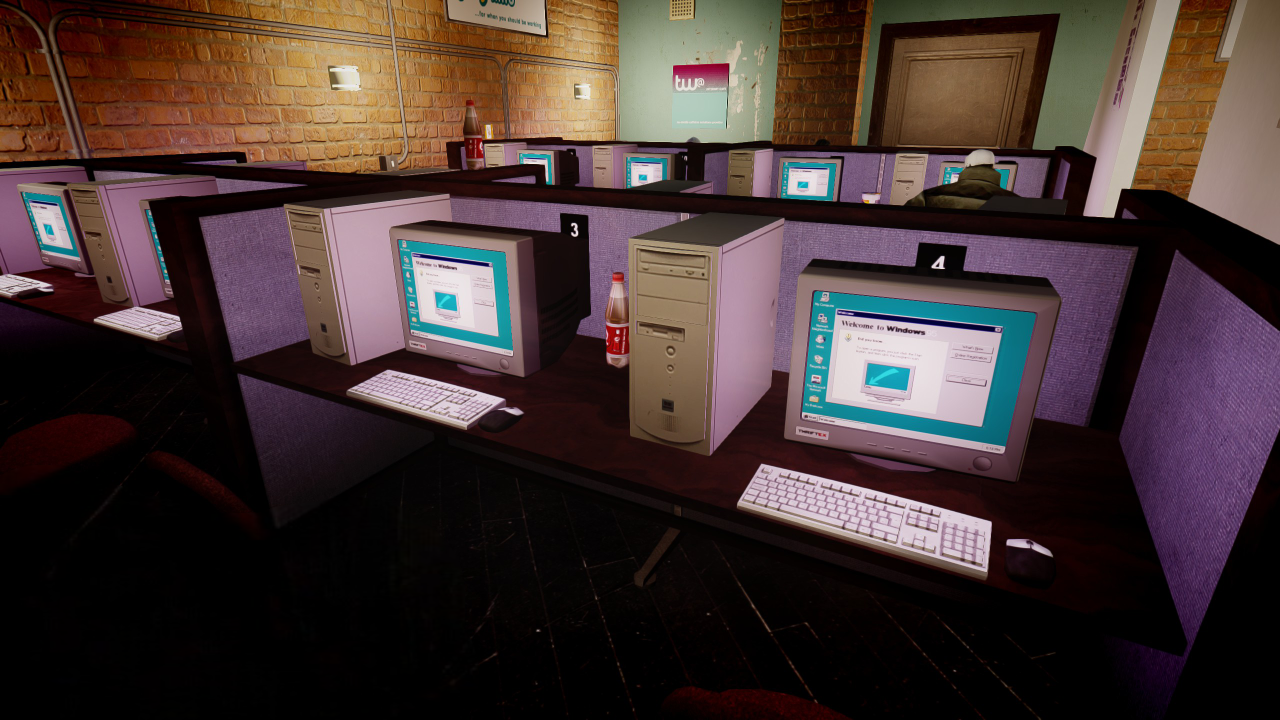Close your eyes and picture it: the satisfying click of a cassette tape snapping into place, the whir of the mechanism engaging, and then... your own personal soundtrack bursting to life through lightweight headphones. For anyone who came of age in the 80s or 90s, the Sony Walkman wasn't just a gadget; it was a gateway. It was freedom, independence, and the revolutionary ability to carry your music – your music – with you, anywhere.
Before the Walkman, music was largely stationary (home stereos) or public (boomboxes, radios) [Google Search]. Sony's pocket-sized marvel changed everything, transforming solitary commutes, jogs in the park, and lazy afternoons into personalized concert experiences. It birthed the mixtape culture, redefined personal space in public, and laid the groundwork for every portable music player that followed, from the Discman to the iPod to the smartphone in your pocket today. Let's press play on the story of this groundbreaking device and how it forever altered our relationship with music.
The Dawn of Personal Audio: An Accidental Revolution?

The Walkman's origin story is a blend of executive desire and engineering ingenuity. The legend often centers around Sony co-founder Masaru Ibuka's wish to listen to opera music on long trans-Pacific flights in 1978. He found existing portable recorders too cumbersome. He tasked engineers, including Nobutoshi Kihara, with modifying Sony's existing "Pressman" – a compact monaural tape recorder popular with journalists – into a playback-only stereo device.
Simultaneously, Sony Chairman Akio Morita observed the rising youth culture and saw potential for a personal, portable music device [Google Search]. Despite internal skepticism – engineers questioned the appeal of a player that couldn't record, and the marketing team doubted people would wear headphones in public – Morita championed the project. He believed in the power of personal music experience.
Key elements leading to the Walkman:
- Executive Vision: Both Ibuka's desire for portable opera and Morita's belief in a youth-focused personal stereo were crucial drivers.
- Existing Technology: The core mechanics were adapted from the Pressman recorder, removing recording circuits and speakers to save space and weight [Google Search].
- Headphone Innovation: Existing headphones were bulky and heavy. Sony engineers developed the lightweight MDR-3L2 headphones, weighing only around 45-50 grams, making comfortable mobile listening feasible [Google Search].
- Focus on Portability: The goal was a device small and light enough to be carried easily, not much larger than the cassette tape itself.
On July 1, 1979, the Sony Walkman TPS-L2 launched in Japan. Priced at ¥33,000 (around $150 USD then), it was positioned as affordable for young people [Google Search]. Initial sales were modest, but Sony's unique marketing – having employees use the Walkman in public spaces in Tokyo and offering demonstrations – quickly generated buzz. The revolution had begun.
The Evolution of "My Music, My Way": Walkman and Its Descendants
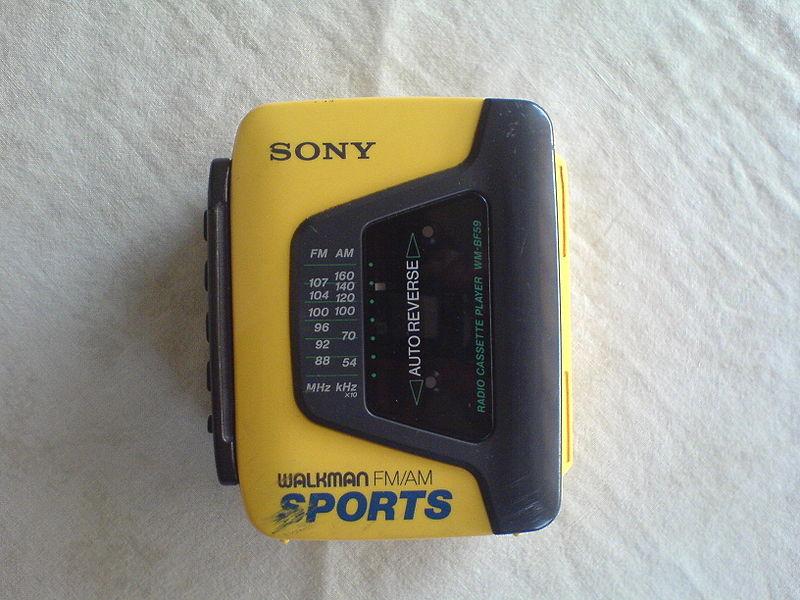
The TPS-L2 was just the start. Sony rapidly iterated, creating a vast family of Walkman products and defining portable audio for decades.
- Walkman TPS-L2 (1979): The original blue-and-silver icon. Featured two headphone jacks (for shared listening, reflecting initial concerns about isolation) and a "hotline" button that muted music for conversation. These social features were later dropped as personal listening became the norm [Google Search].
- Walkman WM-2 (1981): Significantly smaller and sleeker than the TPS-L2, setting the standard for future miniaturization.
- Walkman with Radio (Early 80s): Models like the SRF-40 FM Walkman (radio only, 1980) and WM-F1 (cassette/radio, 1982) added broadcast listening.
- Walkman with Dolby NR & Auto-Reverse (1982): Enhanced sound quality and convenience features became common.
- Sports Walkman (Mid-80s): Recognizable by their bright yellow, water-resistant casings, these durable models were designed for active use.
- Discman (Launched 1984): Sony introduced portable CD players under the "Discman" brand (later rebranded CD Walkman in 1997). While offering superior digital sound, they were larger, more prone to skipping, and CDs were less robust and customizable than cassettes.
- DAT Walkman (1990): Portable Digital Audio Tape players, a high-fidelity but ultimately niche format.
- MiniDisc Walkman (1992): Offered recordable, near-CD quality digital audio on small, durable discs. Popular in some markets but eventually overshadowed.
- Network Walkman (1999): Sony's first digital audio players using Memory Stick storage, marking the transition to file-based music.
- MP3/Digital Walkman (2000s): Sony continued the Walkman brand for flash memory and hard drive-based MP3 players, competing directly with the Apple iPod and others.
The cassette Walkman era officially ended in Japan in 2010 when Sony ceased production, though the brand name lives on for its digital players. By 1999, Sony had sold over 186 million cassette Walkmans, cementing its place in tech history.
"Technical" Specs: The Portable Sound Experience
How did the experience and technology stack up across different portable music eras pioneered or influenced by the Walkman?
|
Feature |
Cassette Walkman (e.g., TPS-L2, WM-2) |
Discman (Early CD) |
MiniDisc Walkman (MD) |
Early MP3 Player (e.g., iPod Gen 1) |
|
Media Format |
Compact Cassette (Analog Tape) |
Compact Disc (CD) |
MiniDisc (Magneto-Optical) |
Digital File (MP3, AAC etc.) |
|
Audio Quality |
Analog (Variable, hiss, wow/flutter) |
Digital (CD Quality) |
Digital (Near-CD, ATRAC compression) |
Digital (Compressed, variable bitrate) |
|
Storage |
60-120 mins per tape |
~74 mins per CD |
~74 mins per MD (LP modes later) |
5GB (~1000 songs) |
|
Customization |
Mix Tapes (Easy Recording) |
Burning CDs (Requires PC) |
Recording (Easy, track editing) |
Playlists (Requires PC/Mac) |
|
Durability |
Relatively Robust |
Prone to scratches |
Durable Disc Cartridge |
Solid State (later models) |
|
Skip Protection |
Minimal |
Poor (Anti-skip tech evolved) |
Excellent |
Excellent |
|
Battery Life |
Hours (AA Batteries) |
Hours (AA Batteries) |
Hours (Rechargeable/AA) |
~10 Hours (Rechargeable) |
|
Size/Weight |
Pocketable (TPS-L2 larger) |
Larger, less pocketable |
Smaller than CD, pocketable |
Pocketable |
|
Key Feature |
Portability, Mix Tapes |
Digital Sound |
Recordability, Durability |
Massive Storage Capacity |
The Walkman wasn't necessarily the highest fidelity, but its combination of portability, affordability, and the customizable nature of cassettes (especially mixtapes) created a powerful cultural force that subsequent formats struggled to replicate entirely, until the MP3 player offered massive storage and digital convenience.
Cultural Impact: Soundtracking Life, Tuning Out the World
The Walkman didn't just change how we listened; it changed how we lived.
- The Personal Soundtrack: Life gained a soundtrack. Commutes, workouts, walks, chores – previously silent or filled with ambient noise – could now be curated musical experiences. Music became deeply integrated into the flow of daily life.
- Rise of Exercise Music: Jogging and aerobics boomed in the 80s, and the Walkman (especially the Sports models) became an essential accessory, providing motivation and rhythm.
- Mixtape Culture: The Walkman fueled the art of the mixtape. Carefully curating songs recorded from the radio, LPs, or other tapes onto a blank cassette became a primary way to discover, share, and express musical taste – and affection. Do you remember spending hours perfecting a mixtape for a friend or crush?
- Fashion Statement: The Walkman, particularly those iconic headphones, became a fashion accessory, a visible symbol of being cool, modern, and connected to music culture [Google Search].
- Redefining Public/Private Space: This was perhaps the most profound impact. The Walkman allowed individuals to create a private auditory bubble in public spaces. This led to new modes of navigating urban environments, but also sparked debate [Google Search].
- The "Walkman Effect" & Social Isolation Debate: Critics worried that people plugged into Walkmans were becoming isolated, rude, and disconnected from their surroundings and each other. Sony initially tried to mitigate this with two headphone jacks and the "hotline" feature on the TPS-L2, but the trend towards solitary listening proved powerful [Google Search]. This debate about technology and social isolation continues today with smartphones and earbuds.
As one commentator noted, "Music became a much more personal thing" [Google Search]. The Walkman shifted listening from a predominantly shared experience to an intensely individual one.
Collector's Corner: Hunting the Analog Artifact
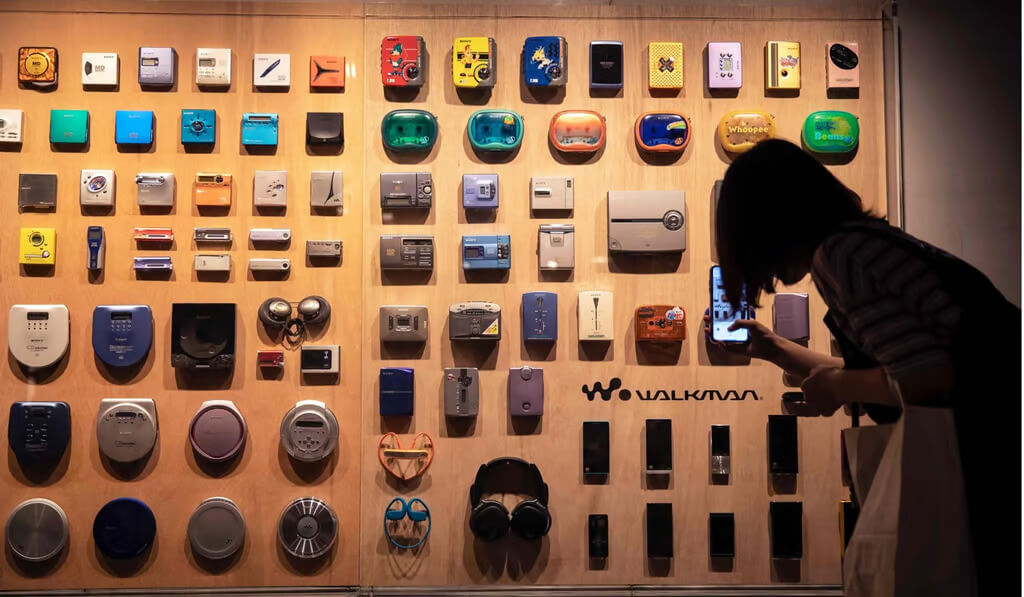 Walkman collecting is a vibrant part of the retro tech scene. Nostalgia, iconic design, and the analog experience drive interest.
Walkman collecting is a vibrant part of the retro tech scene. Nostalgia, iconic design, and the analog experience drive interest.
- Iconic Models: The original TPS-L2 is highly sought after, as are early WM series models, the yellow Sports Walkmans, and high-end professional models like the WM-D6C [Google Search]. Limited editions, like the 10th-anniversary sterling silver models, are grails.
- Condition is Key: Working condition significantly impacts value. Cosmetic condition (scratches, battery corrosion) is also important. Original headphones, cases, and boxes add value.
- Functionality: Many vintage Walkmans need servicing (new belts, head cleaning, capacitor replacement) to work properly. Repairability varies by model.
- Value: Prices range dramatically. Common models in average condition might be found for $30-$100, while mint, boxed, desirable models (like the TPS-L2 or D6C) can fetch hundreds or even thousands of dollars on platforms like eBay or Etsy.
- The Experience: For many collectors, it's not just about ownership but about experiencing music on cassette again – the tactile feel, the mechanical sounds, the analog warmth.
Collecting Walkmans is a tangible connection to a pivotal moment in music and technology history.
Why We Miss the Click and Whir
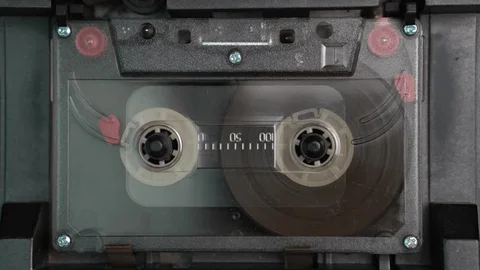 Why the enduring fondness for a technology long surpassed in convenience and fidelity?
Why the enduring fondness for a technology long surpassed in convenience and fidelity?
- Tangibility: In an era of intangible digital files, the physical cassette tape, the mechanical player, the click of buttons offer a satisfying tactile interaction. Holding your music felt different.
- The Mixtape Ritual: Creating and receiving mixtapes was a personal, often intimate, act of curation and sharing that playlists don't fully replicate. It required time, effort, and liner notes!
- Focused Listening: A cassette played from start to finish (unless you manually skipped). It encouraged listening to albums or curated sequences, rather than endlessly shuffling or skipping tracks.
- The Analog Sound: While technically lower fidelity, some appreciate the "warmth" or character of analog tape, including its imperfections like tape hiss.
- Simplicity: It did one thing: play tapes. No notifications, no infinite menus, just music.
- Iconic Design: Many Walkman models are icons of 80s and 90s industrial design, aesthetically pleasing artifacts of their time.
We don't miss tangled tapes or fast-forwarding forever, but we might miss the deliberate, focused, and tangible way the Walkman allowed us to connect with music.
The Soundtrack Plays On: Walkman's Lasting Echo
The Sony Walkman was more than just a successful product; it was a cultural earthquake. It fundamentally changed our relationship with music, making it personal, portable, and deeply integrated into the fabric of our lives. It demonstrated the power of user-centric design – fulfilling a desire people didn't even know they had until the Walkman provided the solution.
Its success reshaped Sony and influenced generations of product designers, including Steve Jobs at Apple [Google Search]. The debates it sparked about public versus private space and technology's role in social connection echo louder than ever in our hyper-connected smartphone world.
While the cassette Walkman itself is a retro artifact, its core idea – music anytime, anywhere, just for you – is the foundation upon which the entire modern digital music ecosystem is built. Every time you pop in earbuds and press play on your phone, you're experiencing the legacy of that little blue-and-silver box that, 45 years ago, put the world's soundtrack in your pocket.
